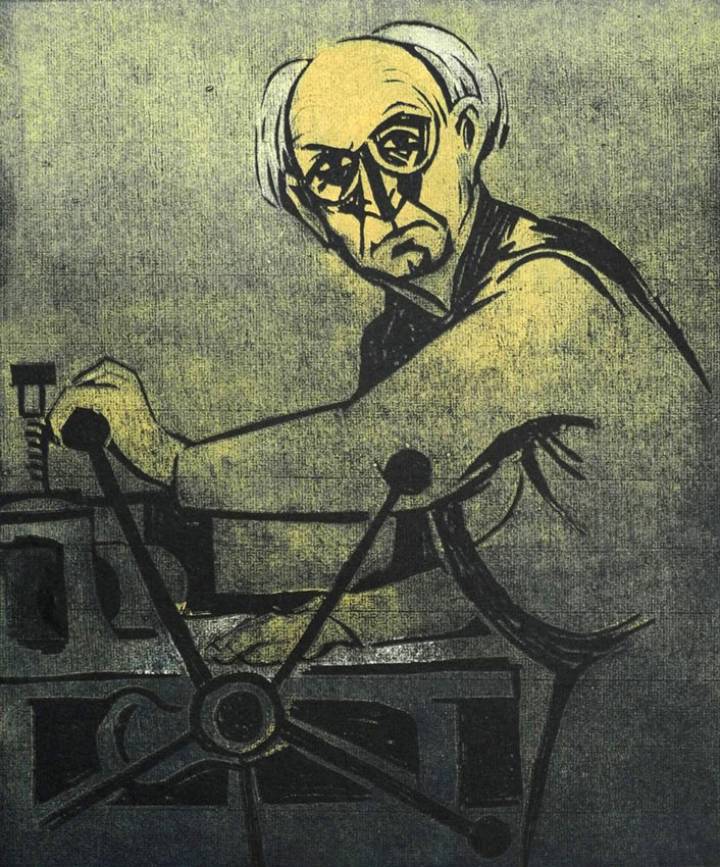
The artwork of Gunter Ullrich
Artistic Experimentation - Printing Techniques
“Art lies in simplicity”
From the beginning of his work as an artist, Gunter Ullrich strove for a clear and simplified form of expression. It thus soon became apparent that – in addition to drawing and watercolor – printing would be his preferred medium. In contrast to oil paintings prints require clean lines from the beginning.
The Technique of Woodcutting - Brittle Wood Becomes a Crucial Symbol of a Motif
In the 1950s and 1960s the artist worked mainly in wood and linocuts. As a material wood in particular aroused the joy of experimentation for Ullrich. The brittle quality of the wood forced him to work out the essence of a motif without any gimmicks or painterly effects. Consequently, the artist made numerous wood and linocuts by hand. He began using a printing press only in 1970 and continued to evolve technically and creatively.
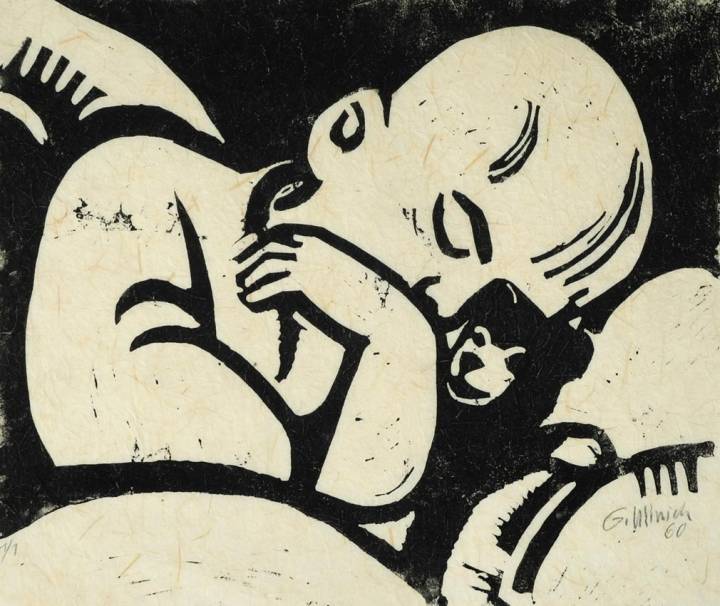
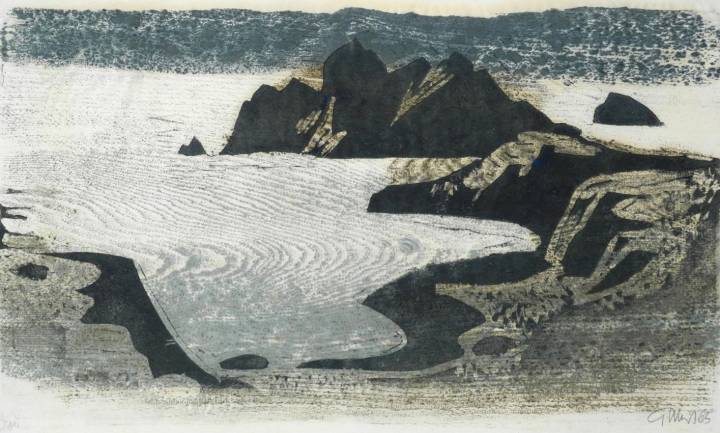
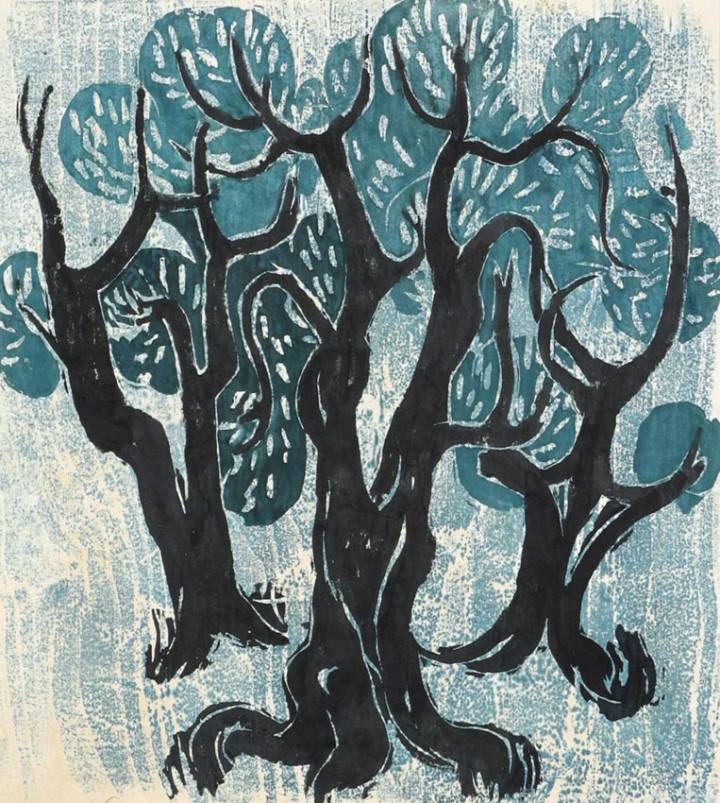
Expressionist and East Asian Influences
Ullrich’s artistry took its bearings from the artists of classical Modernism. After the Second World War and the end of the defamation of “degenerate artists,” it finally became possible to deal with the “new” art forms freely. In addition to the German Expressionists, East Asian printmakers such as Hokusai and Hiroshige were also among his most important role models. Concepts such as “clarity” and “simplicity” also played a key role in their works.
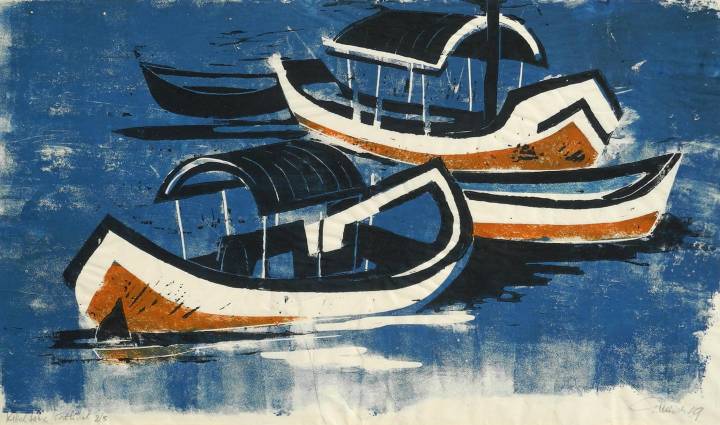
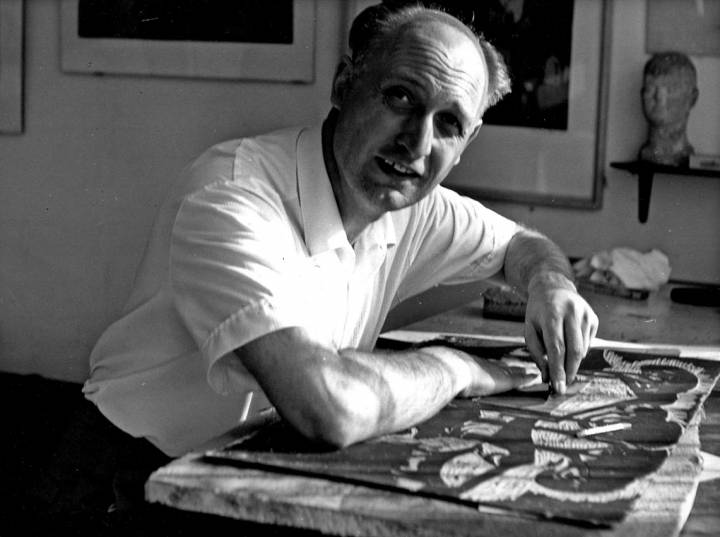
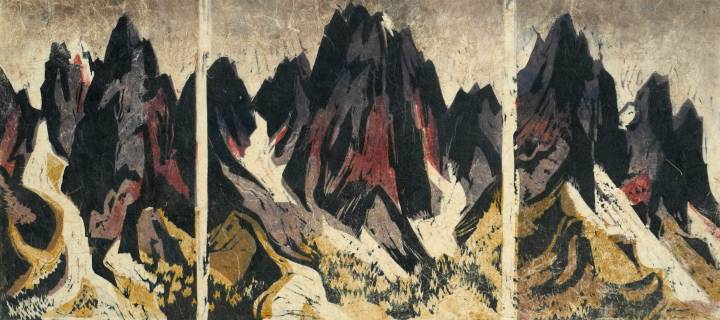
"Reverse Printing"
In the 1960s the Franconian artist also began experimenting with a special relief printing technique: “reverse printing.” Instead of white paper, Ullrich used a dark picture ground. He printed the dark paper with a translucent, bright color, creating an “optical gray effect.” This pale color effect was reflected in particular in the pictures of his war experiences, which Ullrich began processing artistically from the 1960s.
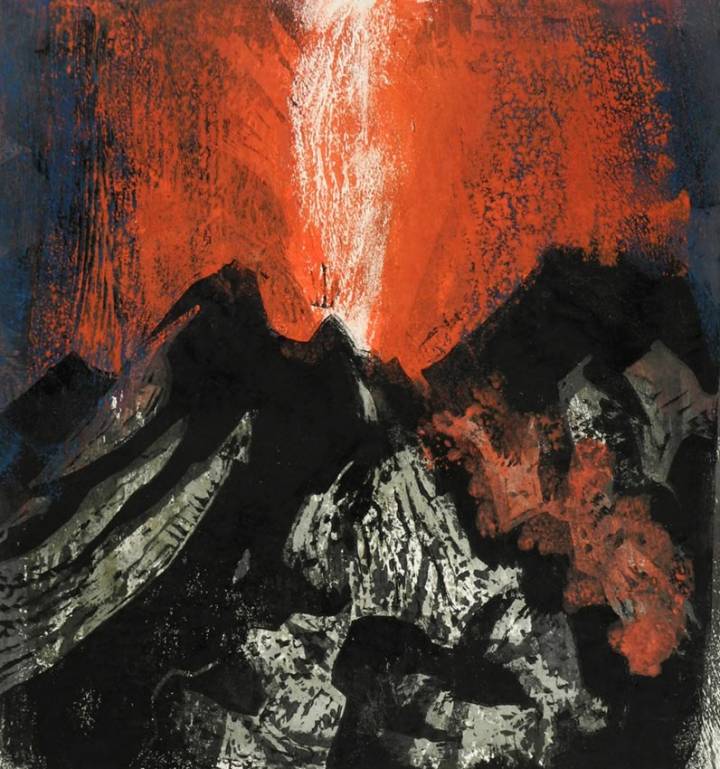
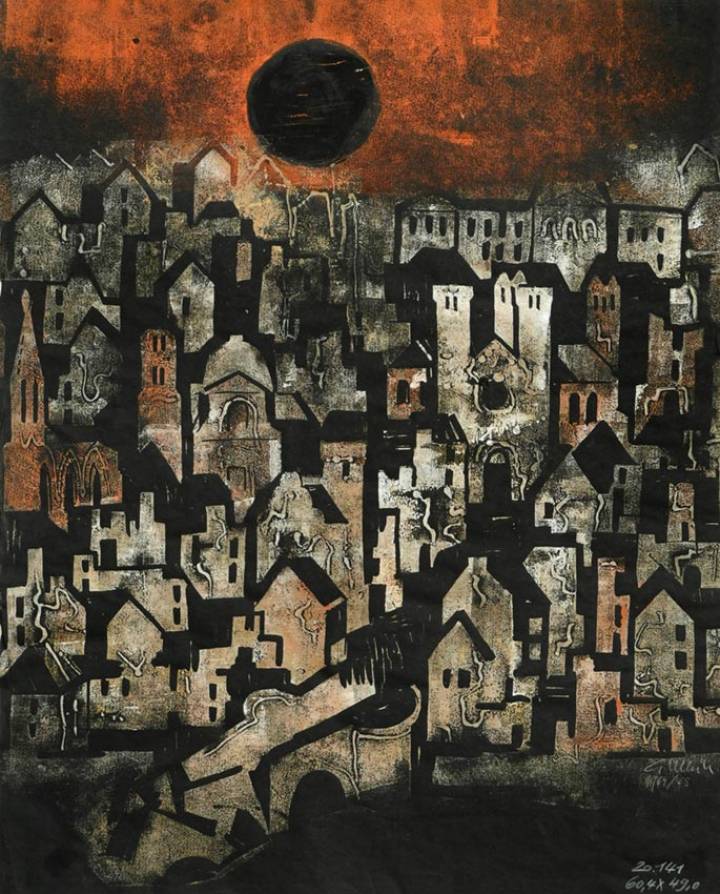
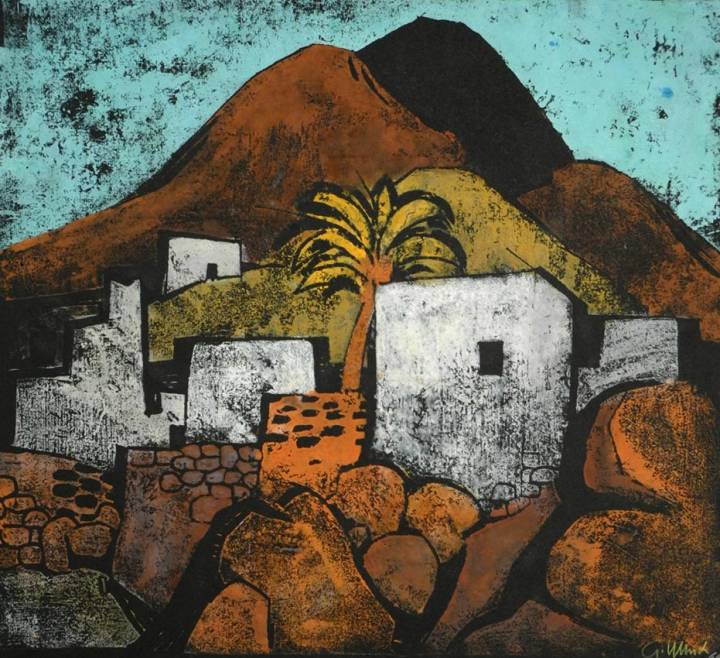
Experimental Color Etching
From the late 1960s, the artist began working in color etching, an intaglio printing process. Ullrich worked on a special “glaze etching technique.” A metal plate, for example iron or copper, was treated with acid. Due to the corrosive properties of the acid (nitric acid or ferric chloride) it was possible to transfer the image onto or into the metal plate.
Ullrich often combined the etching process with drypoint. In other words, he additionally scored or drew his motifs directly onto the metal plate with a steel etching needle. The artist repeatedly applied new layers of paint to the depressions created by acid or etching needles, which he printed one above the other in repeated printing processes. The superimposed glazes created an interesting depth effect with finely nuanced shades. Each hand-printed sheet thus became coloristically unique. Ullrich used this method to create different color moods with just one metal plate.
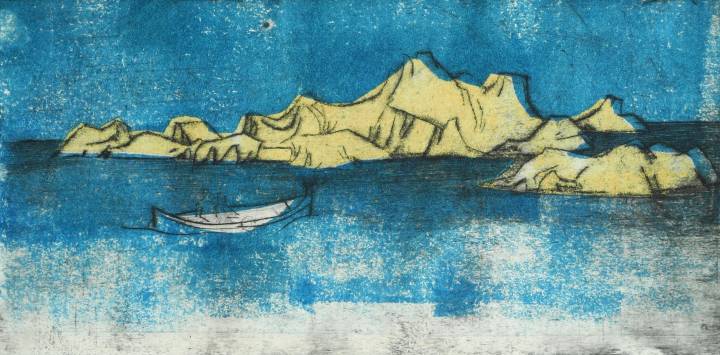
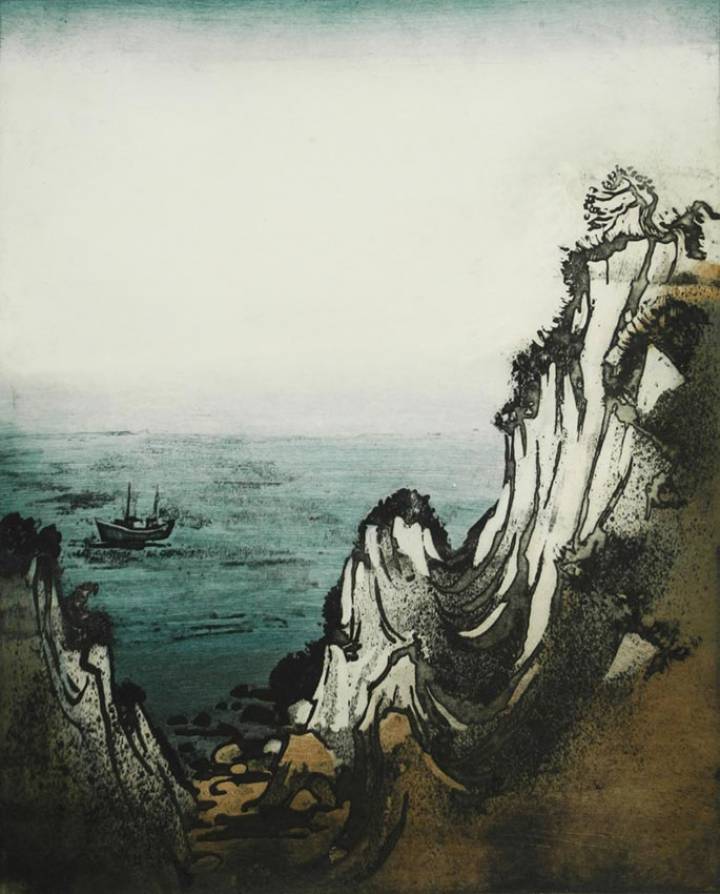
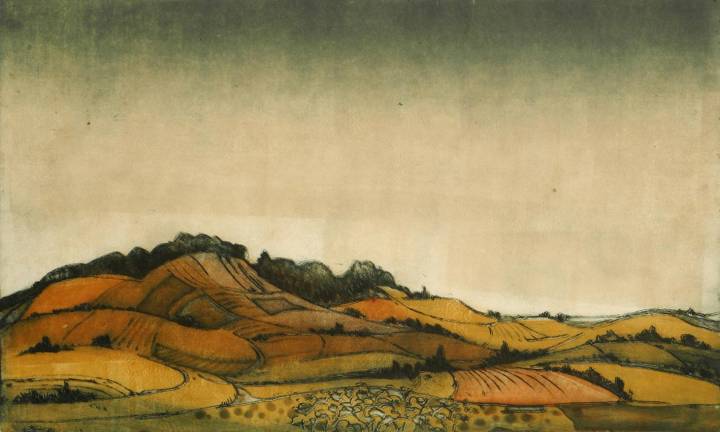
The "Sugar Lift-Ground Technique"
Over time, the artist Gunter Ullrich discovered another etching technique, the so called sugar lift-ground technique. From this emerged his characteristic landscape images, such as Main from 1975.
The “sugar lift-ground technique” made it possible for Ullrich to spontaneously make etchings while traveling: he could paint the sugar-ink solution directly onto the metal plate and thus make a design on site (Pine Trees on a Slope from 1982).
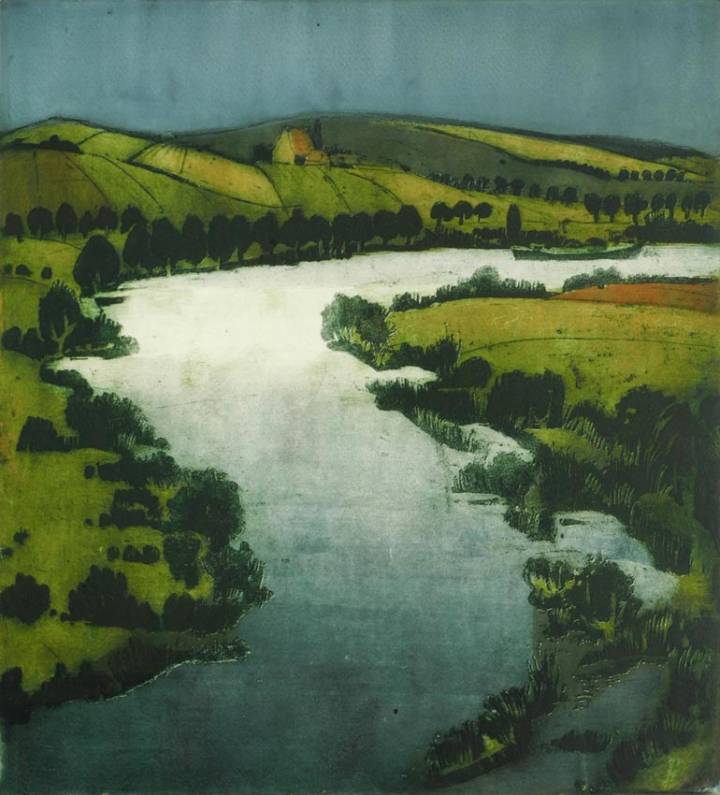
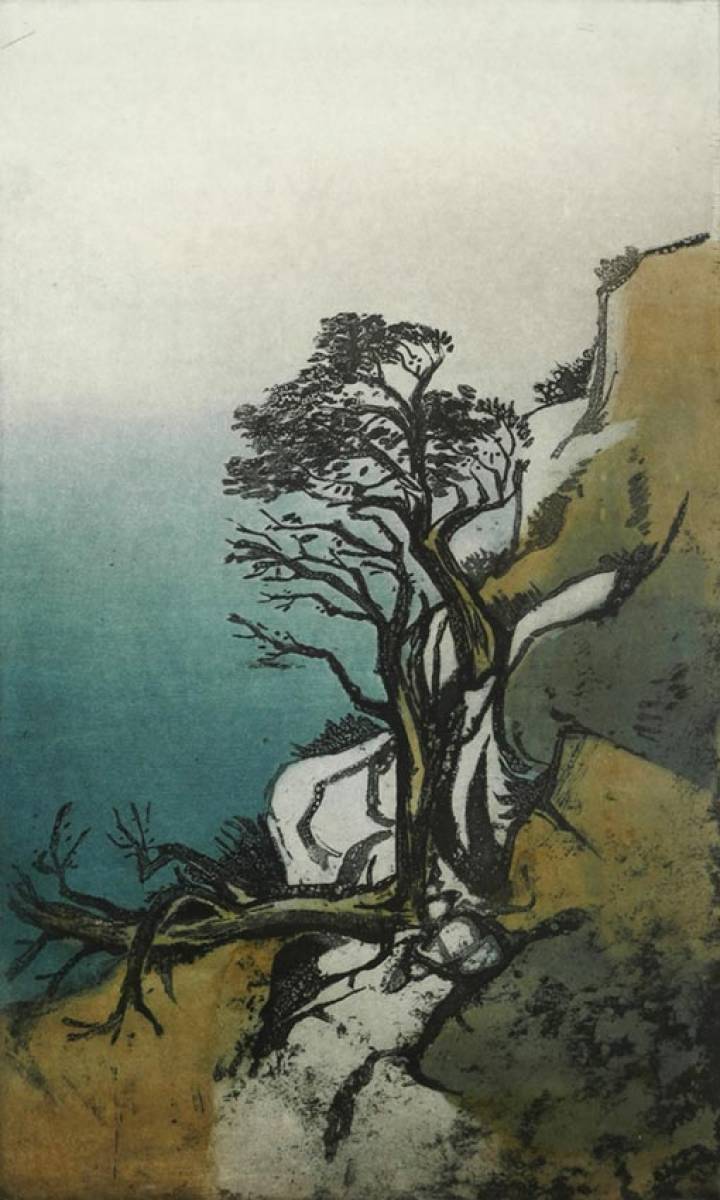
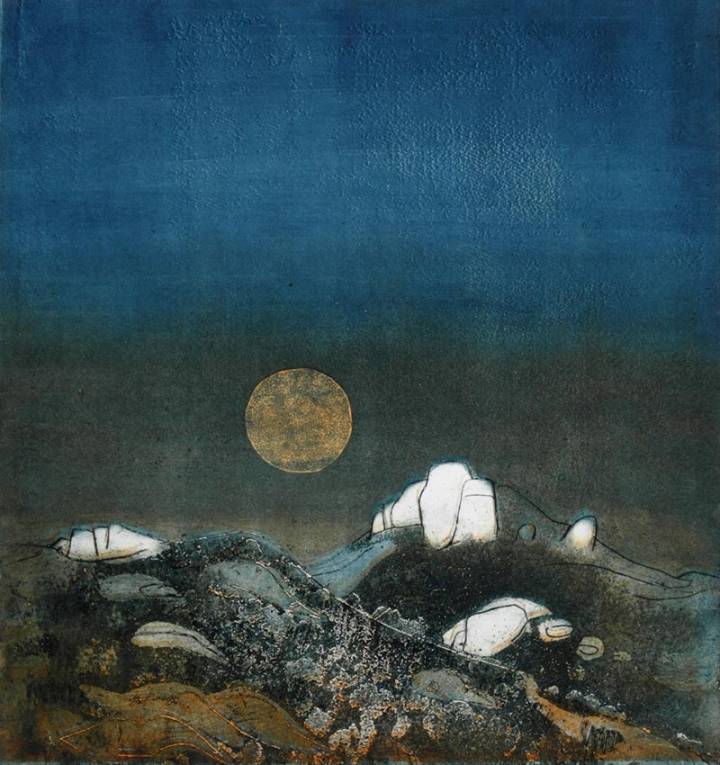
Lino Etching
Another highlight was his development of the lino etching (linocut printing). Others artists had historically used this process but Gunter Ullrich was the first to thoroughly explore this technique, as in Schwanberg with Moon from 1974.
The structure of the etched linoleum plate creates a soft, almost watercolor-like surface effect. But one disadvantage of this technique is that the acid attacks the linoleum so intensely that only a small run of about ten prints per plate is possible.
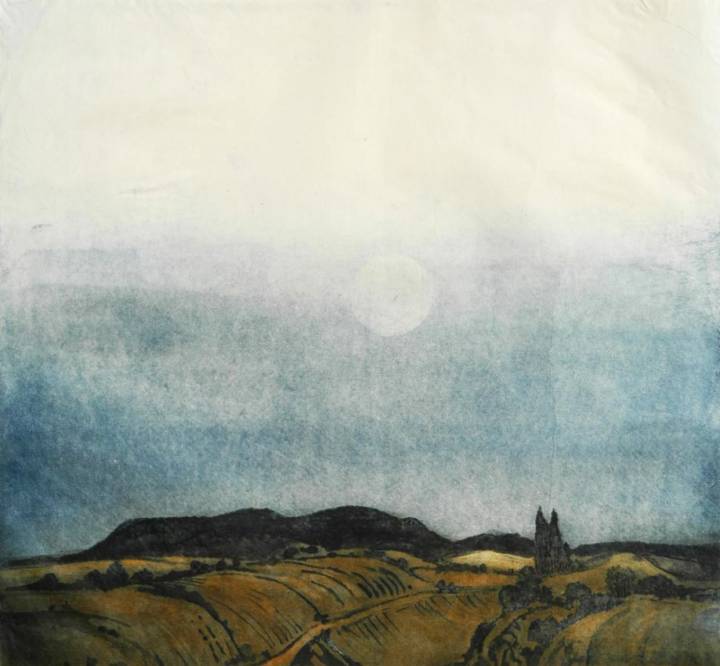
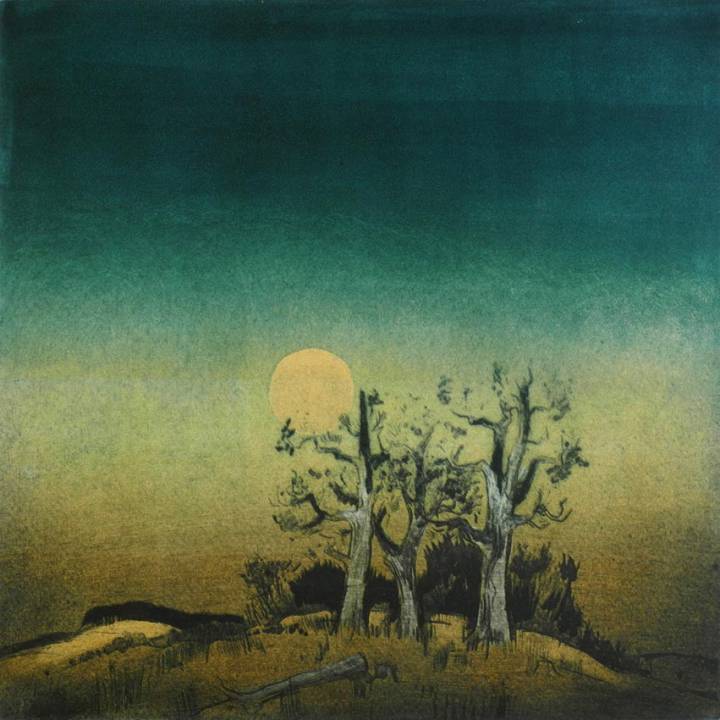
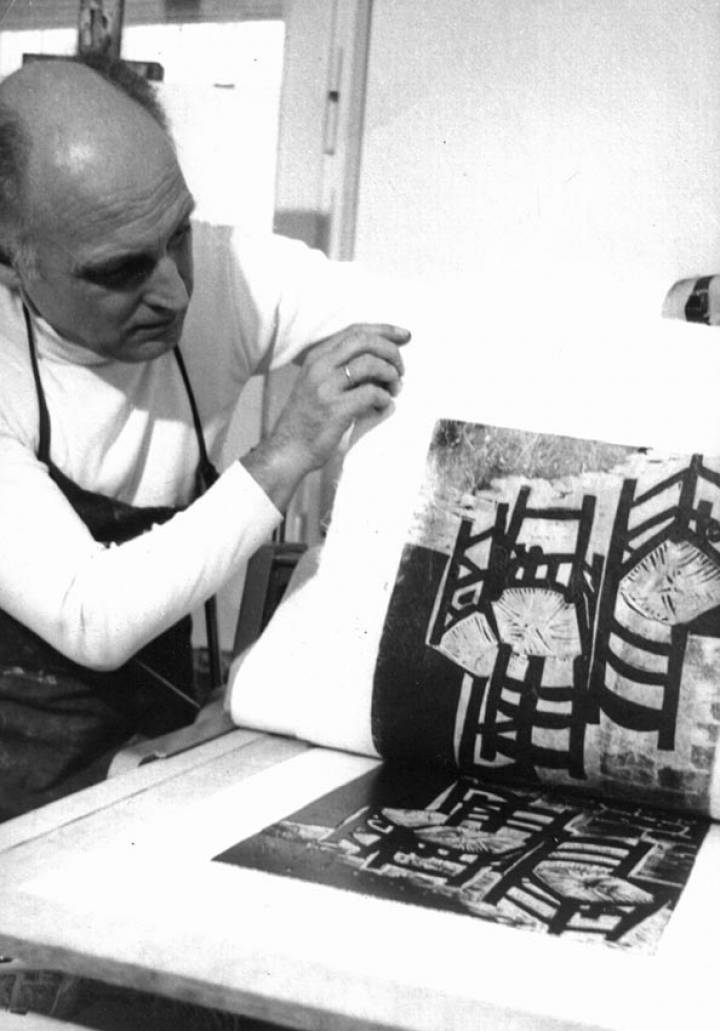
I want to have a positive influence on my work until the very end. That’s why I print myself. This way I can control the pressure and get original works from my manual prints. Of course the editions are small, just ten to twenty prints. Thus, in my printmaking, in contrast to the mass circulation of modern processes, the manual work is noticeable. Gunter Ullrich on his printing work
